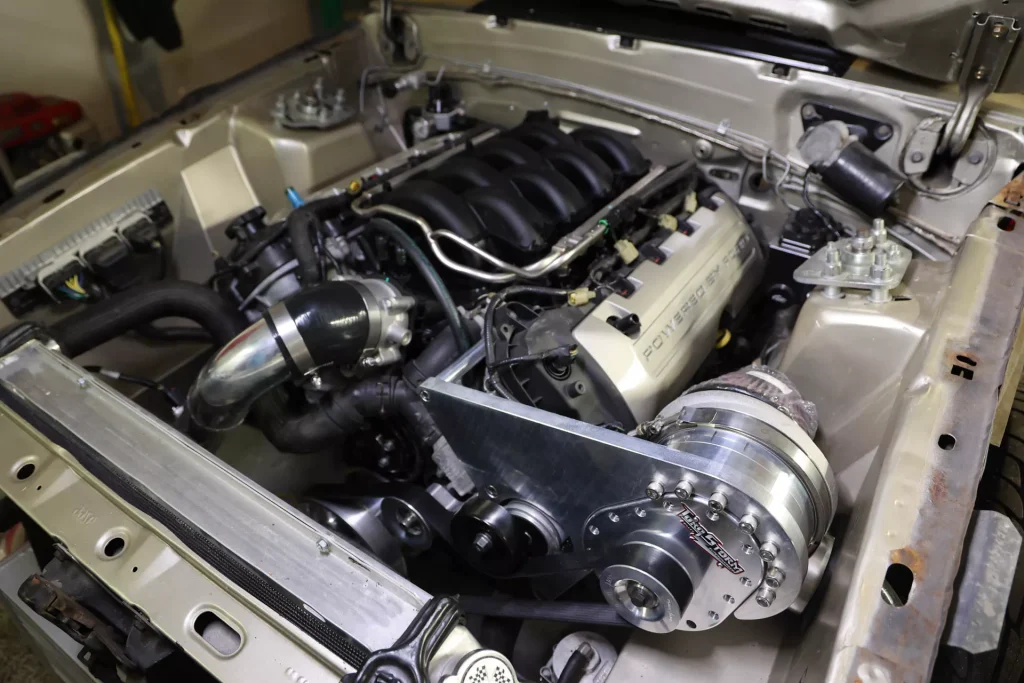Turbocharger and Supercharger Options for Your Truck

Both turbochargers and superchargers use air to push more oxygen into an engine’s combustion process, adding horsepower and torque. Both are more than 100 years old: initially developed for airplane engines at higher altitudes to keep them afloat by squirting more oxygen and fuel into the flames.
Turbos are driven directly from exhaust while superchargers use belt drives on the crankshaft, leading to faster power response with reduced lag time.
Boost
Turbos and superchargers both work to compress air to provide additional power, then send that compressed air directly into an engine where it can be burned along with fuel for greater impact when ignited by spark plug ignition – known as forced induction.
A turbocharger derives its energy for spinning its turbine from exhaust fumes, while a supercharger draws energy directly from the engine using a belt similar to that used by AC and alternators. While supercharging may provide instantaneous boost, its use requires considerable amounts of power in order to operate effectively compared with turbocharging systems.
At higher elevations, both options provide engines with additional benefits by helping to preserve power that would otherwise be lost to thinner air. Each option comes with its own set of tradeoffs: turbos can tend to experience more lag and be costly to replace while superchargers require more upkeep due to having multiple pulleys and gears to keep running smoothly.
Fuel Efficiency
Fitting a turbo or supercharger to your engine doesn’t mean simply hooking it up, cranking up, and performing burnouts – to do it properly, it requires consideration of all of its internal components such as camshaft, piston rings, pushrods and valve springs; otherwise it may end in disaster! Without proper maintenance on these vital parts, your engine could explode!
Both turbochargers and superchargers increase power output by forcing more oxygen into the combustion chamber; however, their methods of operation vary accordingly.
Turbochargers use exhaust emissions to spin a turbine and compress air, providing fuel-efficient power boost with minimal lag time. Unfortunately, though they utilize engine power, turbochargers also consume fuel and generate heat that wears down components over time.
Superchargers connect directly to an engine’s crankshaft, providing instantaneous power and an increase in horsepower. Unlike compressors, superchargers work by increasing oxygen in your air/fuel mix by increasing its pressure – increasing instant power and horsepower output instantly!
Performance
Turbochargers and superchargers both exert additional pressure on the air that enters your engine, increasing oxygen presence so more fuel can be burned and producing additional power.
The main distinction between forced induction systems lies in how air is delivered to an engine. Turbochargers rely on exhaust emissions to spin a turbine that compresses air for smooth power gains with minimal throttle lag; in comparison, superchargers connect directly with your crankshaft, giving an immediate surge in horsepower that may also reduce fuel efficiency and generate additional emissions.
Problem is, which is the best for me? Whether or not to go that route is ultimately up to your driving style and vehicle usage. If you want economy and clean power flow, turbocharger is the thing for you; but if you want to be super fast and stand out with every mile that you put down then supercharging is the thing for you.
Maintenance
Turbochargers use exhaust gases to spin a turbine and compress air, providing a fuel-efficient boost of power with minimal lag time in response. Superchargers, on the other hand, are mechanical compressors directly linked to an engine’s crankshaft through pulleys and gears which drive its compressor fan.
Both forced induction systems offer advantages and disadvantages, and choosing one depends on a number of variables. By balancing their respective features against your driving needs, you can determine which option best meets them.
Turbochargers offer multiple advantages that can increase your car’s performance, efficiency, and durability. But adding one could increase engine demand and cause other components to wear out more rapidly – if this upgrade is in your future it’s wise to carefully consider your driving frequency and budget before committing. Likewise a blower would produce similar results at less expense.
